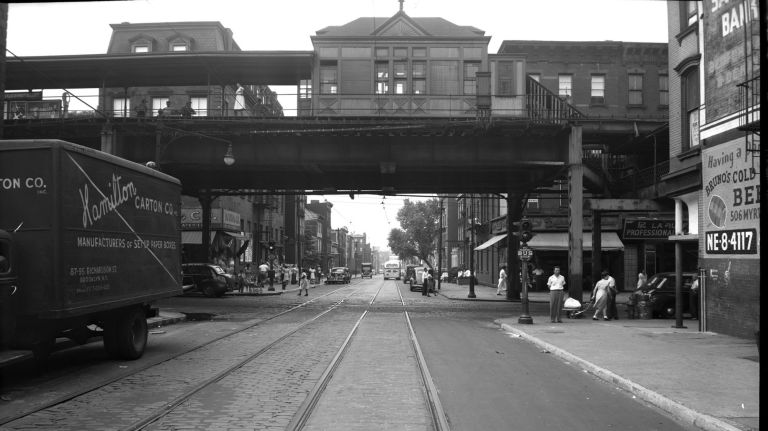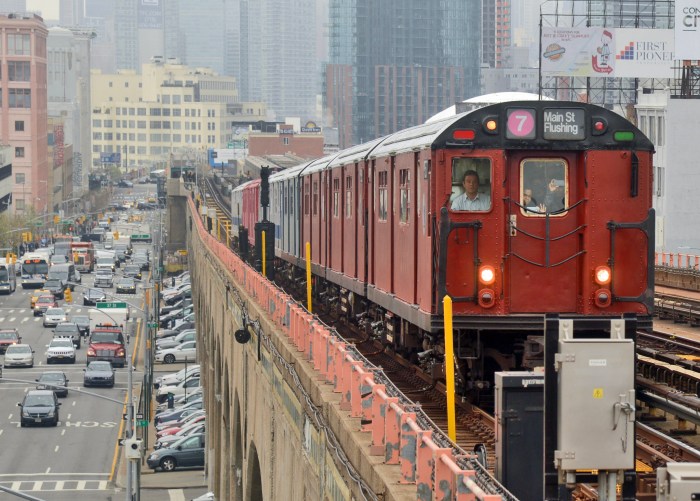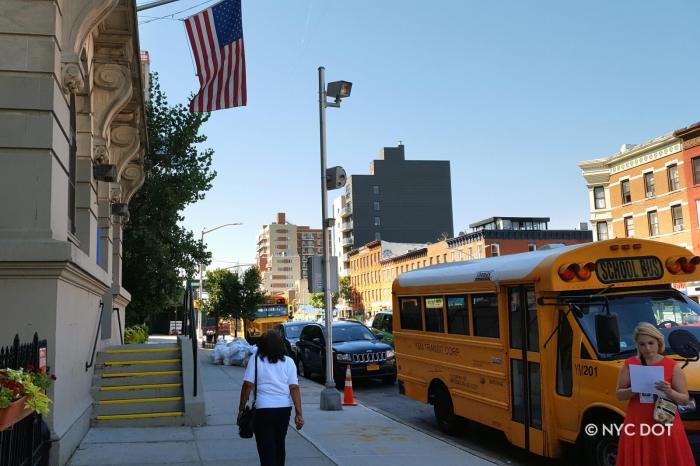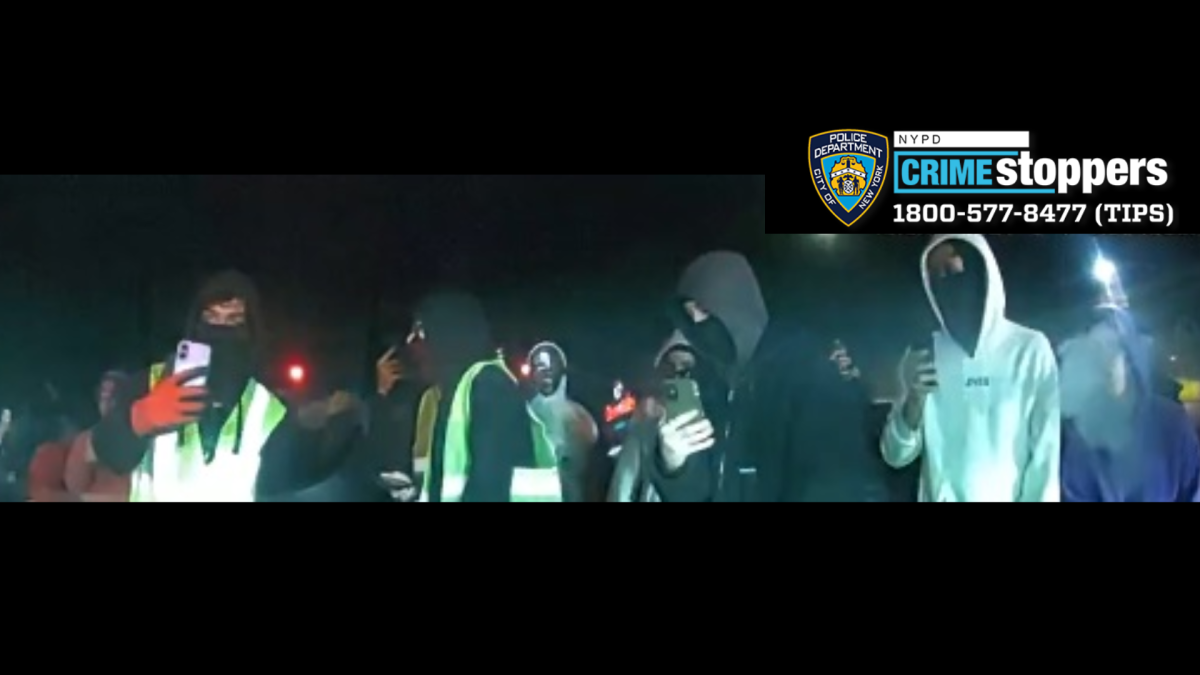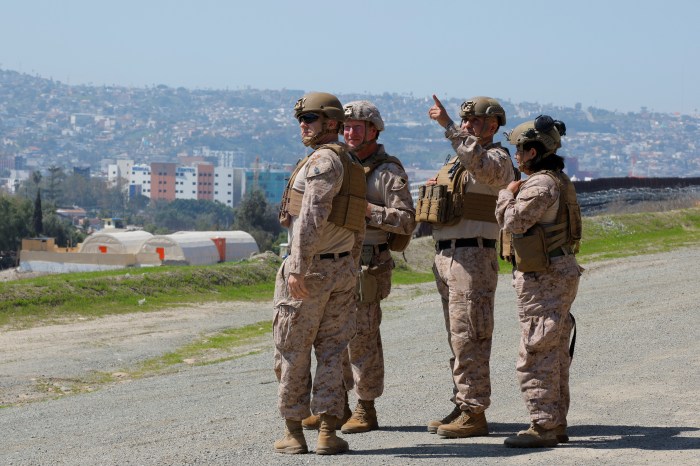Al Zelazo can still remember how the wooden platform would sway on the old Myrtle Avenue El.
“The first time up there I said, ‘Dad, what’s that?!’ As a kid you’re nervous,” said Zelazo, who grew up in Brooklyn. “’Oh, that’s just the El leaving Bridge-Jay Streets,’ he would say. You could tell when the train got moving again. The whole structure would shake.”
Friday marks the 50th anniversary of the death of the old El, which at one point linked commuters from Ridgewood, Glendale and Maspeth to parts of Downtown Brooklyn and lower Manhattan, rumbling over the Brooklyn Bridge. There is still an arm of the abandoned section reaching out from Bushwick, hanging over a block of Myrtle Avenue west of Broadway.
Zelazo, known as “Subway Al,” is a retired PATH worker who sells train memorabilia. He rode the train on occasion with his father. It was the only rapid transit line still using wooden cars at the time; their rattan seats and canvas straps were a draw as a novelty.

“We would go just to ride it and ride the wooden cars,” he said.
But the general public sentiment wasn’t as rosy. Many viewed the Els as antiquated as subways and private automobiles proliferated and that notion helped lead to the demise of the elevated lines across the city, including along Myrtle Avenue.
“What happens with the Myrtle Avenue El kind of parallels what was happening in Brooklyn — ridership peaked in the 1920s,” said Rob DelBagno, the New York Transit Museum’s manager of exhibitions. “The 20s is a prosperous time and how people are moving around in the late 1920s is really changing fast. The subway system is expanding and people are buying cars.”
The Els were unbearably loud and cast a shadow over streets storefronts. Officials at the time would promote their removal as an effort to “open up the sky.”
But the Myrtle El, built and opened in 1888, was a key complement of the Brooklyn Bridge to help facilitate the development of deeper parts of Brooklyn and Queens — like Bushwick and Ridgewood — before either were incorporated as boroughs of New York City.

At the time areas like Brooklyn Heights had been established as well as what were akin to little villages, like Williamsburg. The elevated line’s first few stops passed through other established areas, too, like what’s now Fort Greene and Cobble Hill.
“But the rest of the trip going into what’s now Bushwick and Ridgewood, Queens — those places barely existed at that point,” said DelBagno. “It had a huge effect on Brooklyn. Industrial Williamsburg grew around the El, residential Ridgewood, Queens, grew around the El. It had a big effect in the late 19th century and early 20th century.”
But when the depression hit, the bustling waterfront economy was disappearing and without jobs fewer commuters had reason to take the El to Brooklyn’s piers and warehouses. Ridership saw an uptick briefly, during World War II, when the Brooklyn Navy Yard became the borough’s largest employer. But when the war was over, ridership fell off hard. As other Els were torn down, it seemed to be only a matter of time for Myrtle’s demise.
Joe Raskin, author of The Routes Not Taken: A Trip Through New York City’s Unbuilt Subway System, said officials had disregarded maintenance of the Els, sealing their fate.
“The powers at be chose not to maintain it and it became what was a self-fulfilling prophecy,” he said. “’It’s not going to accomplish anything to repair it, so let’s not repair it.’ And then look at what happened.”

A newer section of the Myrtle Avenue El built at the start of World War I is still operational and serves the M running into Middle Village. The rest of the line was replaced by bus service, and arguably the G line and the Brooklyn-Queens Expressway.
The Transit Authority announced the closure of the Myrtle Avenue El abruptly, the summer before it shuttered. William Ronan, the authority’s chairman at the time, touted the opening of “a 35-block stretch of Myrtle Avenue to light and air.”
In 1968 the authority collected 4.5 million fares combined at the eight stations that were shuttered. The Myrtle-Willoughby Avenues station of the G train, for example, brought in roughly three times as many fares in 2018 than the average shuttered station along Myrtle Avenue El in 1968.
“The closure of the Els really added stress to the streets and existing transit system,” said Raskin. “And if you think of what’s going on now with the L train, the Myrtle El could have really provided an alternative service.”
Myrtle’s demise did not come without protest. Small groups of residents picketed outside of the city’s Board of Transportation offices. Queens commuters pleaded for a reopening at a 1970 public hearing, saying the replacement bus service doubled their trip times, according to a report in The New York Times.
The closure of the El, as well as the construction of the BQE in the mid-20th century, ended up taking a toll on the surrounding neighborhoods for years.
“The construction of the BQE took out a city-block-wide stretch all the way through Brooklyn,” said DelBagno, “And at the same time you don’t have the ridership on the Myrtle Avenue El. Restaurants and bars that used to be along the El all went out of business and all of those neighborhoods really had a downturn for several decades.”
The lasting legacy of the Myrtle El is the beautiful brownstones that popped up along the route in the 1880s and 1890s said DelBagno.
Just as New Yorkers do today, riders flocked to the Myrtle El for its last run. A banner was attached to the front of the train bidding it farewell. One rider was photographed with a train car’s rattan seat on his shoulder as he hauled it away.
“I rode it just to ride it, knowing it was coming to an end,” said Ed Gerson, 74, who was born in Brooklyn, living in Flatbush at the time.
It was a week before the Myrtle’s closure and Gerson’s first and last trip on the line.
“I probably rode from Broadway to Bridge-Jay Streets,” said Gerson. “I wanted to be able to say I was on it. I’m not a sentimental person, but it was fun.”



